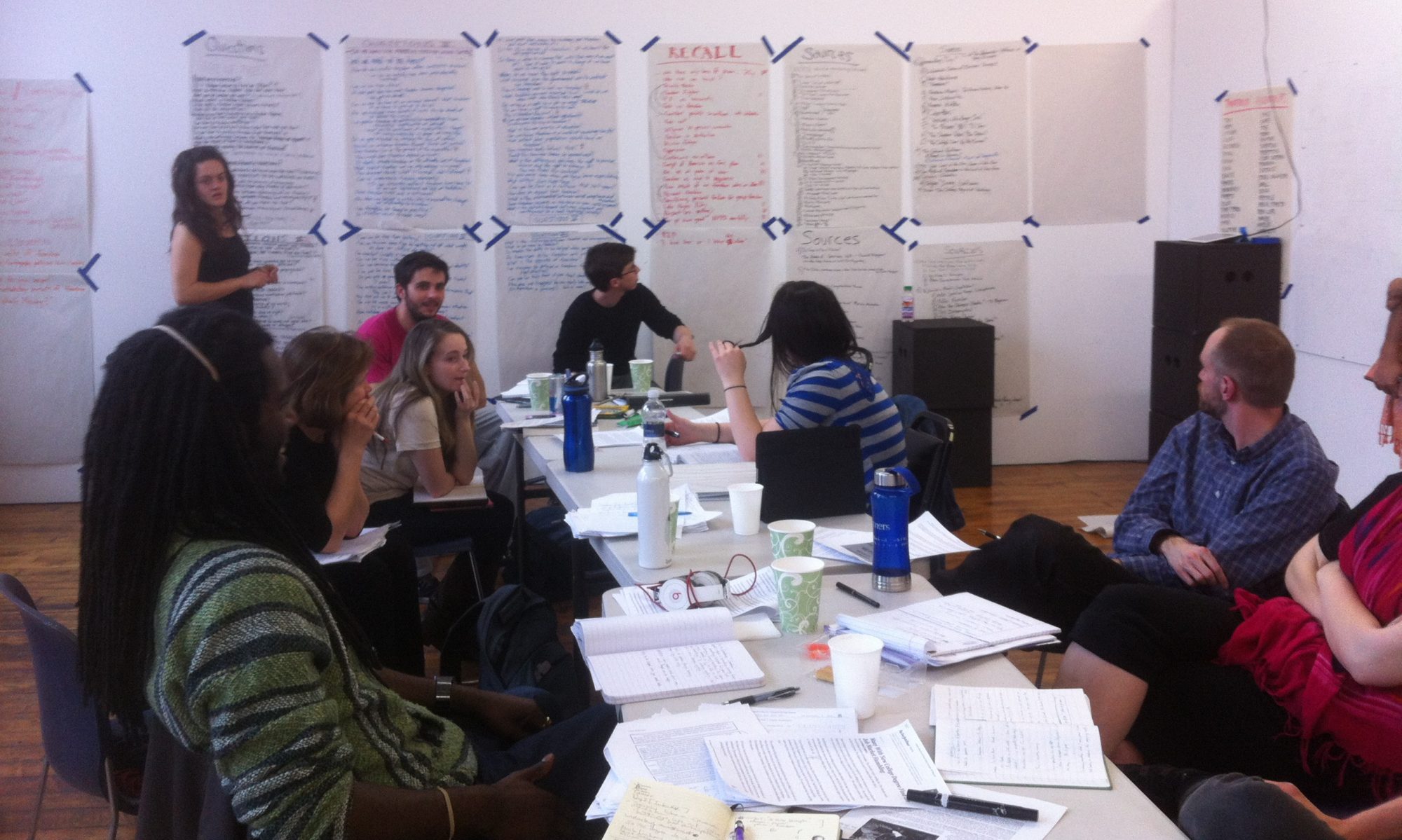Shape is one of the most important things in a play, at least for me. Let’s define shape as the overall pattern of motion for the plot and character arcs. There needs to be a unity of shape for a play to contain beauty. By unity of shape, I mean the principal character’s arc must be the force that molds the play’s shape and the shapes of individual character arcs must reflect the overall shape of the driving plot in the play. And the shape must move in a harmonious fashion. Even ugly beauty involves some form of harmony; even dissonance requires discipline or it’s just noise.
Shape in a play is not static, it must move. It is a four-dimensional shape, taking definite boundaries and filling its countours with detail, but also moving in time to gradually transform from one static shape to another.
Successful directors work this way as well; several directing textbooks talk about “picturization” which is seeing a play as a gradual progress through possibly tens or even hundreds of static pictures. These pictures add up to a time-based experience of shapes in motion. When most successful these shapes are evocative and not literal. Most of the time when an actor complains about a scene being too on the nose, they are referring to this dynamic. By the way, audiences rarely say a scene’s too on the nose, especially at readings. It’s always an actor, director, another playwright, or stage manager, even a designer who will point these things out to us. Or we just notice it ourselves. But audiences always say in talk backs they want everything to be crystal clear. Really they don’t want that, they’re just telling us they have a hard time reading the music off the page, and that’s completely understandable – they haven’t made a life of interpreting plays.
Each individual picture should evoke a particular sense of dynamism (potential movement) as well as status (level and forward/backward position control status – downstage and higher up take higher status than upstage and lower down.) This is a gross oversimplification for the purpose of making a point, and I don’t mean by this definition to denigrate the importance of voice. But the visual sense dominates our way of perceiving change, and change is what theatre is about, and that’s got to count for something.
When determing the shapes of characters in the play, it’s important that the shapes of secondary and incenting characters should *not* be identical to that of the play overall. Instead the shapes should either support or contrast to the central shape. Oversimplified, if the principal character is moving in a downward direction in terms of their status, other characters should experience upward motion. For example, as Vera’s fate apparently moves downward, that of her husband, who’s exploiting her downfall for his own ends, moves upward in inverse proportion. Now, the husband is not a principal character in the play, at least not in terms of overall pages where he appears, however he’s important to show the progress of destiny in the play.

